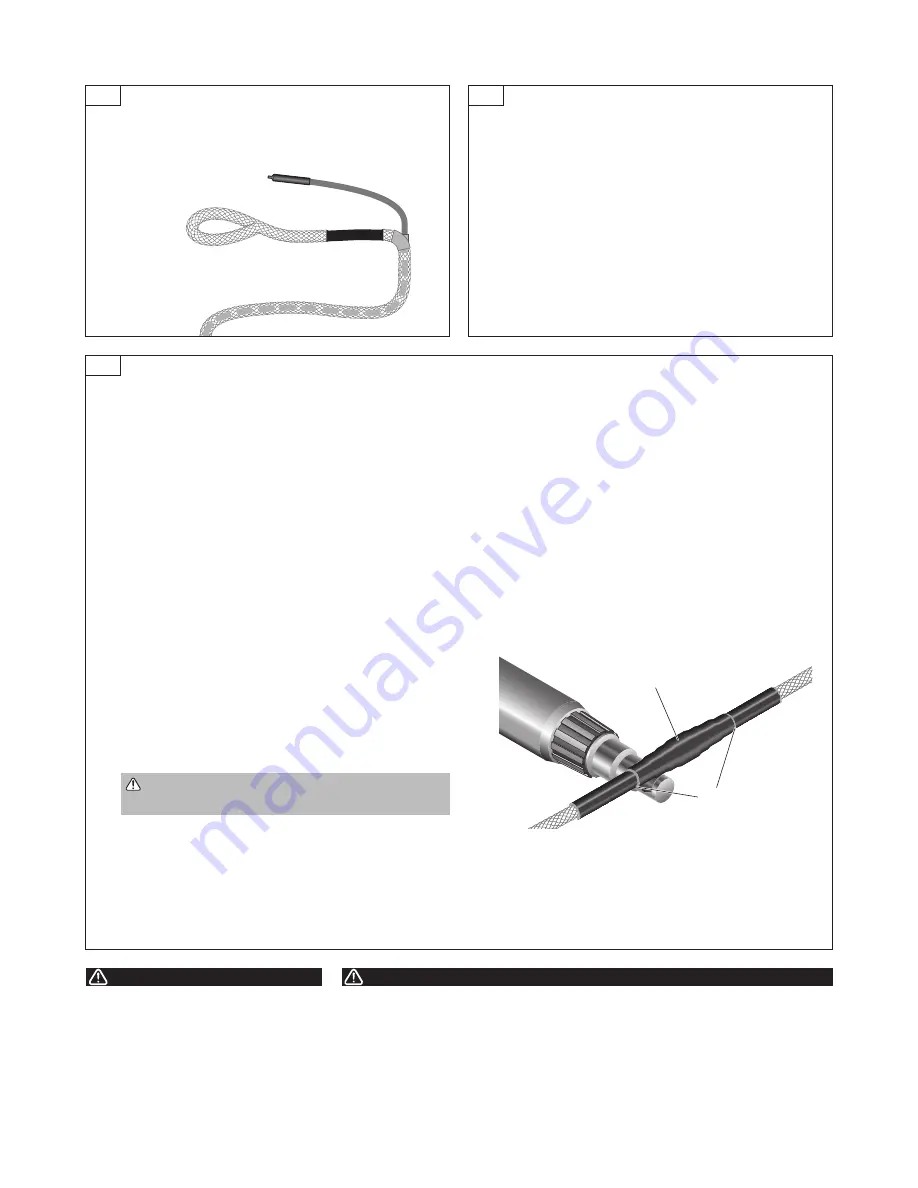
nVent.com | 5
Tape
SCT
SCT
Unlabeled heat-shrinkable tube
Adhesive visible at
ends of tubing
6
5C
7
Prior to installing a new length of sensor cable, slide the
unlabeled shrink tube (from connector kit) onto the cable.
Connect the sensing cable to the cable circuit (lengths of
sensing cable connected in series) previously installed.
• Mark the connector position on the layout plan.
• Install TraceTek mapping tag (TT-TAG).
•
Note
: As an extra precaution on large installations,
periodically test the entire cable circuit to confirm that all
installed sensing cable is still clean and intact.
• Unplug the end termination and connect it to the next
length of sensing cable to be installed.
Repeat the installation sequence for each length of cable.
• Grasp the sealed end and pull about 12 inches (30 cm) of
sensor cable out while holding the rope braid in place.
• Tape the rope braid to sensor cable to prevent the rope
from springing back.
Complete the system
1. Install other TraceTek components (such as Modular
Branching Connectors, Weighted Lengths, and Modular
Jumper Cables) as called for in the system layout.
Complete the sensing circuit.
Note
: All components of the system have male or female
metal connectors or both. The male connectors are oriented
toward the instrument panel. As new sections of cable are
added to the main leg or branch, each newly added section
should end with an open female connector. The end of each
branch or main leg is terminated with a male end termination.
2. Test the sensing circuit (or portions of it) to confirm that
the sensing cable is clean and intact. Follow the Sensing
Cable Test Procedure.
3. Locate the unlabeled heat shrink tubing segment (delivered
along with the TT500X-HS connectorized cable, or as part
of the TT5000–HUV–CK–MC–M/F connector kit.) Install
the heat shrink tube as environmental seal over all mated
male/female (pin/socket) connections.
• Center the unlabeled shrink tube over the pin/socket
connection. Heat shrink the tube over the connection,
beginning in the center and shrinking towards the ends
until the tube fully conforms to the shape of the connection
and adhesive flows from each end of the tube.
CAUTION: Burn Hazard. Do not get hot adhesive on
your bare skin. The hot adhesive will burn your skin.
• Avoid overheating the thin wall unlabeled shrink tubing.
The thin wall tubing requires less heat than the SCT cable
shrink tubing.
•
Let the entire connector area cool before handling the cable.
Note: Do not leave connector open to environment. If
the connector becomes wet or contaminated, it will need
to be replaced.
Note
: When arranging any TT500X-HS cables do not use a
bend radius less than 2 in. (51 mm).
Note
: If a heat-shrinkable tube must be removed (for
example, for cable testing), refer to Oversleeve Removal
Instructions (H54258).
4. Connect the sensing circuit to the TraceTek alarm module
and activate the system as soon as is practical. Use the
alarm module to monitor for events during the final stages
of construction.
FIRE HAZARD
. Heat guns and flameless heating
tools can cause fire or explosion in hazardous
areas. Be sure there are no flammable materials
or vapors in the area before using these tools.
Follow all site safety guidelines when working in
hazardous areas.
Component approvals and performance are based
on the use of specified parts only.
HEALTH HAZARD
. Overheating heat-shrinkable
tubing will produce fumes that may cause
irritation. Use adequate ventilation and avoid
charring or burning. Consult MSDS RAY3122 for
further information.
CHEMTREC 24-hour emergency telephone:
(800) 424-9300
Non-emergency health and safety information:
(800) 545-6258
.
WARNING:
CAUTION:




























